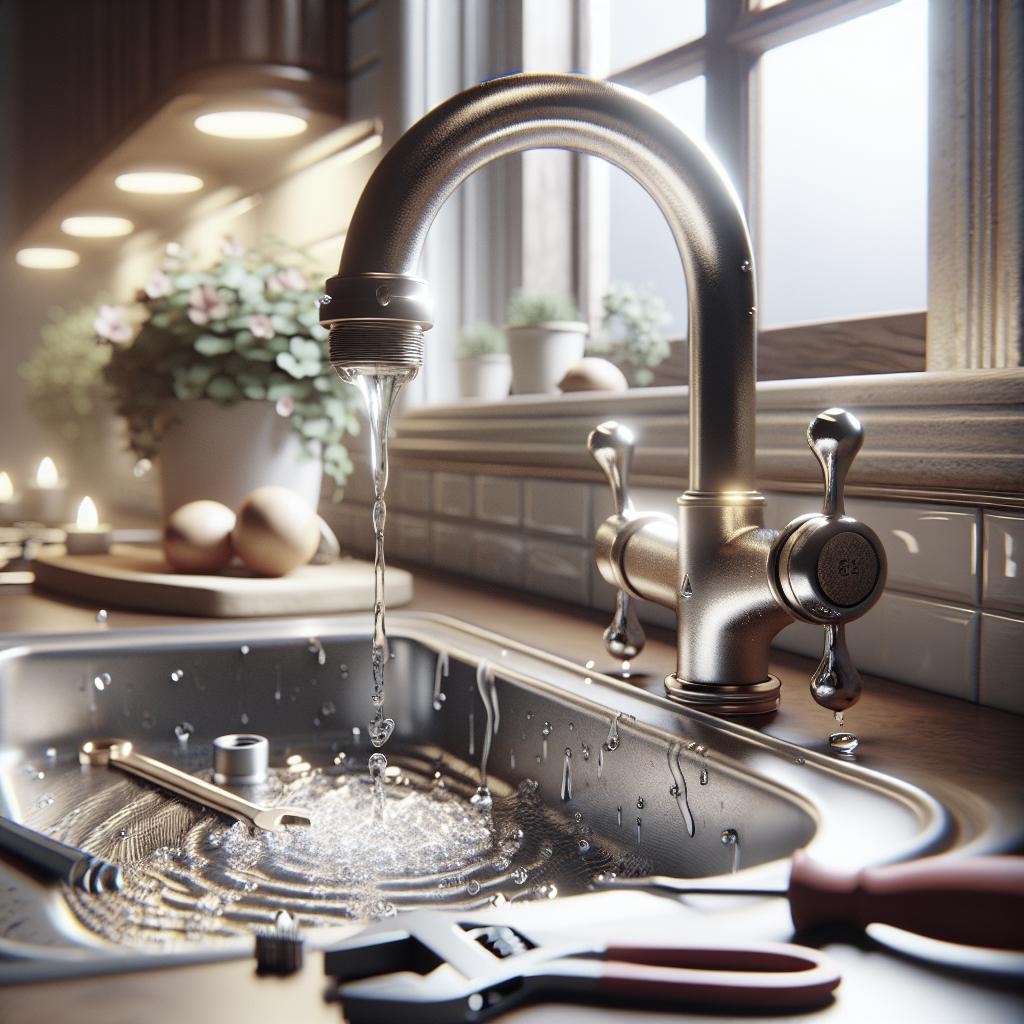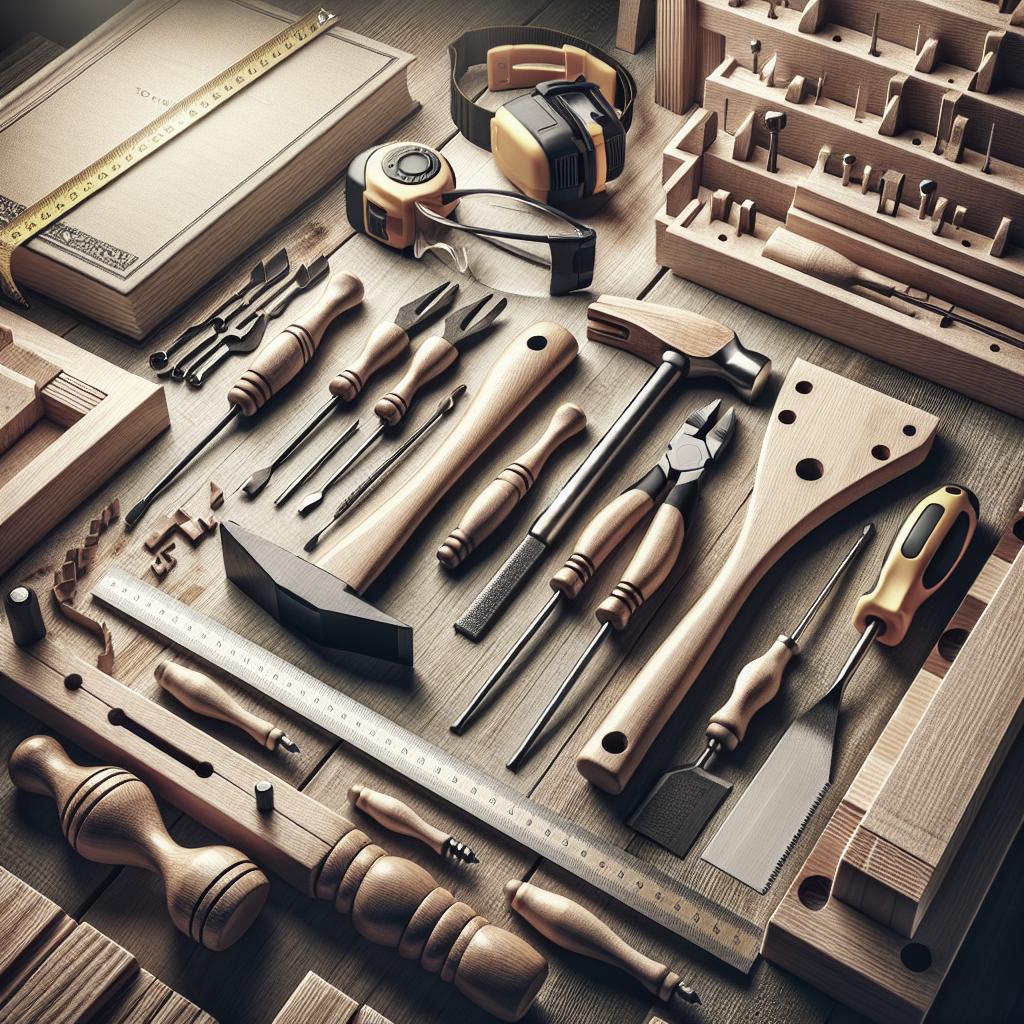“`html
How to Fix a Leaky Kitchen Faucet
Dealing with a leaky kitchen faucet can be more than just a nuisance. It can lead to increased water bills and potential water damage if not addressed promptly. This blog post will guide you through understanding different types of faucets, identifying common causes of leaks, preventative tips, and a step-by-step process to fix a leaky faucet. Additionally, we’ll discuss when it’s time to call a professional. Whether you’re a DIY enthusiast or new to home repairs, this detailed guide will empower you to tackle leaky faucets with confidence.
Types of Faucets
Leaky Compression Faucets
Compression faucets are one of the oldest types typically found in many households. They have separate handles for hot and cold water and work through a stem and washer mechanism. If you have a leaky compression faucet, it’s usually due to a worn-out rubber washer or a damaged seat valve.
To fix a leaky compression faucet, you will need to replace the washer or the valve seat. This involves removing the faucet handle, which we’ll discuss in detail later. Investing in good-quality washers during your repair can help avoid frequent replacements.
Leaky Ball Faucets
Ball faucets are commonly found in kitchen sinks and are known for having a single handle that controls both the temperature and flow of water. These faucets are characteristically tricky because the design includes multiple parts, including a ball, springs, and cam.
Leaks in ball faucets can often be traced back to worn-out seals or springs. The best approach to fix these leaks is to purchase a specific ball faucet repair kit, which provides all the necessary components for replacement.
Cartridge Faucets
Cartridge faucets are popular for their smooth operation, making them a favorite in many modern households. They are also easy to repair compared to other types. Leaks in cartridge faucets usually occur because of a damaged cartridge.
To fix a leaking cartridge faucet, you must remove the handle and replace the cartridge with a new one. It’s essential to ensure the replacement cartridge matches your faucet model to avoid mismatches and further issues.
Ceramic Disk Faucets
Ceramic disk faucets are known for their durability and are among the most modern options available. Despite their robust design, leaks can still occur, typically due to a worn-out or broken ceramic disk.
Repairing a ceramic disk faucet often involves replacing the disk itself. It is crucial to be gentle and careful during this process to avoid causing damage to other components. These types of faucets are less prone to leaks but require precise repair work when a leak occurs.
Single-Handle Faucets
Single-handle faucets simplify control by using one handle to adjust both water temperature and flow. These faucets can leak due to worn-out O-rings or cartridges. Their streamlined design often makes them easier to troubleshoot and repair.
Diagnosing these leaks typically involves disassembling the faucet to inspect the O-rings and cartridges for any signs of wear and tear. Replacing the faulty components should restore the faucet’s functionality.
Double-Handle Faucets (Non-Compression)
Double-handle non-compression faucets combine traditional design with modern technology, offering precise control over water temperature and flow. Leaks can often arise from worn-out gaskets or faulty valve seats.
Repairing leaks in these types often involves unscrewing the handles to access and replace the worn parts. It’s crucial to ensure that the replacements are of good quality to prolong the fix’s effectiveness.
Common Causes of Leaky Faucet Handles
Leaky faucet handles are often caused by worn-out or damaged components such as cartridges, washers, or O-rings. These parts can become brittle or lose elasticity over time, leading to minor gaps that allow water to escape.
Another common cause is mineral buildup, especially in areas with hard water. This buildup can impact how tightly parts close, making it difficult to achieve a complete seal even when the faucet is turned off. Regular cleaning can help mitigate this issue.
Additionally, improper installation or overtightening can lead to leaks. Ensuring correct installation and using the right tools for adjustments can prevent damage to the components, reducing the likelihood of leaks.
Tips To Prevent Faucet Leaks
Inspect Regularly
Regular inspection is paramount in preventing faucet leaks. Take a few moments every month to examine your faucets for signs of wear or damage. Catching these issues early can prevent more severe problems down the line.
Pay attention to how the faucet handle feels when you turn it. Any changes in resistance or movement can be an early indicator of potential issues. This proactive approach can save you both time and money in repairs.
Consider Regular Cleaning and Care
Maintaining your faucet with regular cleaning can significantly extend its lifespan. Use mild cleaners to remove mineral deposits and debris that can clog or wear down its components. Ensure that all parts are dried thoroughly to prevent corrosion.
Establish a consistent cleaning schedule, especially if you live in an area with hard water. Keeping your faucets clean can help maintain their efficiency and reduce the likelihood of leaks.
Address Minor Issues
Don’t wait for minor issues to escalate. Addressing drips, unusual noises, or any signs of wear immediately can prevent small problems from turning into costly repairs. A prompt response can protect not only your faucet but also your plumbing system as a whole.
Investing a little time in addressing minor repairs promptly can prevent more significant issues that typically require extensive repair work. This vigilance also mitigates the risk of water damage to surrounding areas.
Manage Water Pressure
High water pressure can be detrimental to faucets, leading to leaks and other issues over time. Use a pressure gauge to check your home’s water pressure and ensure it falls within the recommended range (usually between 40 and 60 psi).
If your water pressure is too high, consider installing a pressure regulator. Maintaining optimal water pressure can help extend the life of your faucets and reduce the strain on them.
Know Who To Call To Fix a Leaky Faucet
While many faucet leaks can be fixed with a bit of DIY spirit, there are times when calling a professional plumber is your best option. Consider calling a plumber if the leak persists after multiple repair attempts or if you’d rather not handle it yourself.
Hiring a professional can ensure long-lasting fixes and can be particularly useful if the leak stems from a deeper plumbing issue. A good plumber will assess the situation comprehensively and provide solutions that effectively address the root cause.
Additionally, consider professional help if the fixture’s repairs require specialized tools or expertise you aren’t comfortable handling. A reliable professional can offer peace of mind and restore your faucet to its optimal condition.
Categories
When discussing faucet repairs, it’s helpful to categorize the tasks involved. These include simple repairs such as replacing washers or O-rings, intermediate tasks like changing cartridges, and complex issues requiring professional intervention.
Understanding where your specific problem fits within these categories can help you decide the best course of action. Simple repairs often take less time and require basic tools, making them ideal DIY projects.
Complex repairs are best handled by professionals who have the tools and experience necessary to manage more intricate issues. Knowing when to seek help is crucial in preventing further damage and ensuring effective solutions.
1. Turn Off the Water Supply
The first crucial step in fixing a leaky faucet is to turn off the water supply. Locate the shutoff valve under your sink and turn it counterclockwise until it stops to ensure no water flows during the repair process.
If you cannot locate individual shutoff valves, consider turning off the main water supply to your home. This step prevents water spillage and allows you to work more comfortably without added pressure or leakage.
Ensure that the faucet is completely drained by turning it on after shutting off the supply. This releases any remaining water in the pipes and ensures you’re working with a dry fixture.
2. Remove the Faucet Handle
Once the water supply is off, the next step is to remove the faucet handle. Depending on your faucet’s design, this may involve unscrewing or popping off handle caps and using an Allen wrench or screwdriver to loosen screws.
Carefully remove the handle to reveal the internal components. This step is vital as it provides access to the parts you’ll need to examine and potentially replace to fix the leak.
Ensure you keep track of all parts removed for easy reassembly. Picturing or listing the components can help guide you during reassembly and prevent parts from being misplaced.
3. Find the Source of the Leak
With the handle removed, you can now inspect the internal components to find the source of the leak. Look for signs of wear or damage on washers, O-rings, cartridges, or seals which commonly cause leaks.
Manual inspection can reveal cracks or decompositions that signify the need for part replacement. In some cases, running your fingers along the parts can help detect subtle deformities or breaks that may not be visually apparent.
Identifying the exact source of a leak ensures you replace only the necessary parts, streamlining the repair process and minimizing cost and effort.
4. Replace the Worn or Broken Part
Once the leaky component has been identified, proceed to replace it with a new part that matches the specification of your faucet model. Purchase high-quality tools and components, as they can offer greater durability and efficiency, reducing the need for frequent replacements.
In some instances, acquiring a complete repair kit designed for your faucet can provide everything you need. Kits often contain updated versions of worn components, helping ensure a more robust repair.
After replacing the damaged parts, inspect the new components carefully to make certain they are securely fitted. This step is crucial to prevent future leaks and ensure a stable repair outcome.
5. Reassemble the Faucet
The final repair step involves reassembling the faucet by reversing the disassembly process. Ensure each part is positioned correctly and tightened to the manufacturer’s specifications using the right tools.
After reassembling, turn on the water supply gradually and test the faucet for leaks. Observing its function closely can confirm the effectiveness of your repairs, demonstrating smooth operation and secure seals.
If leaks persist, consider rechecking each component for alignment and correct fitting. Otherwise, your repairs are complete, allowing you to return to daily activities without concerning drips and unnecessary water waste.
Final Thoughts
| Step | Description |
|---|---|
| Types of Faucets | Overview of various faucet types and specific repair tips for each. |
| Common Causes of Leaky Faucet Handles | Discusses typical causes of leaks, including worn-out parts and mineral buildup. |
| Tips To Prevent Faucet Leaks | Preventative measures such as regular inspections, cleaning, and managing water pressure. |
| Know Who To Call To Fix a Leaky Faucet | Guidance on when to seek professional help versus DIY repair. |
| 1. Turn Off the Water Supply | Instructions for safely shutting off the water supply before repairs. |
| 2. Remove the Faucet Handle | Step-by-step on how to disassemble the faucet handle to access internal parts. |
| 3. Find the Source of the Leak | Methods for inspecting and identifying the leak’s origin. |
| 4. Replace the Worn or Broken Part | Advice on obtaining and replacing faulty faucet components. |
| 5. Reassemble the Faucet | Reassembly procedure and testing for leaks after repairs. |
“`


